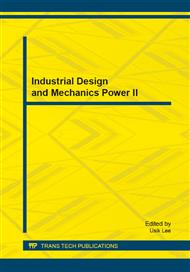p.1030
p.1038
p.1046
p.1050
p.1057
p.1062
p.1066
p.1073
p.1077
Heat Generation Characteristics and Heat Dissipation Experiment of CPU Chip
Abstract:
With the development of the CPU integration, providing effective heat removal solutions for chip is an important research. This article analyses the reason of chip overheat and different adopted techniques in chip heat dissipation and commits itself to take the variation of the operating conditions into account to obtain the overall temperature rising curve based on a simplified thermal model. And then it utilizes heating plate as constant heat source to simulate CPU heating. Under the power of 20W, 30W and 40W, we compare five kinds of fan-cooled radiators in order to provide the experimental statistics for the further design and theoretical analysis.
Info:
Periodical:
Pages:
1057-1061
Citation:
Online since:
October 2013
Keywords:
Price:
Сopyright:
© 2013 Trans Tech Publications Ltd. All Rights Reserved
Share:
Citation:


